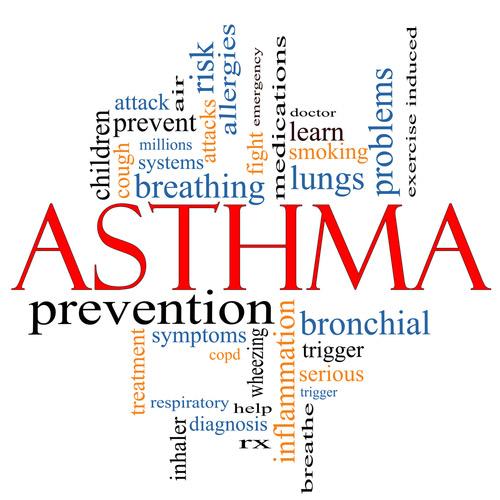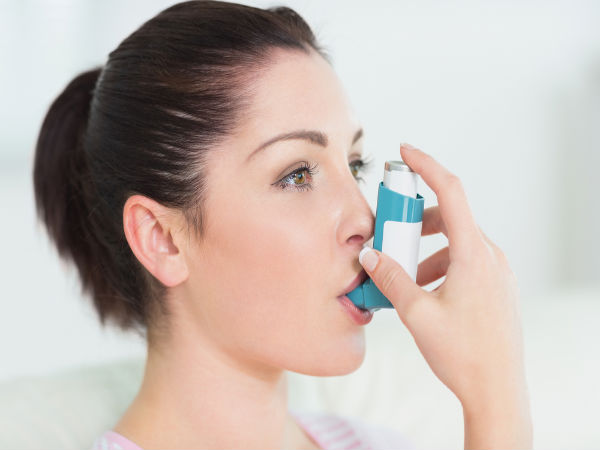Asthma is a life-threatening disease characterized by the inflamed or swollen airways. This disease can cause wheezing, chest tightness, coughing or difficulty in breathing. People are concerned with the safety issues after observing the side effects of asthma medications and they often think Are Asthma medications safe?
Before reaching to any conclusion about the safety of any drug, it should be understood well what kind of drug is used in what case and what precautions are to be taken in particular circumstances, because the drug dosage is directly related to the methods and the proper method used by the patients is very important. In addition, one should consult the doctor before giving any final verdict on the safety of drugs. Asthma medications could be safe or unsafe depending on what category of drug you are taking and the number of times. Let’s have a look at the categories of drugs to treat asthma. There are two categories of asthma drugs and they are quick-relief medications that immediately treat sudden symptoms to give instant relief and long-term controller medications that are taken regularly to prevent symptoms. The goal of the asthma medication is either to control the inflammation or to ease the symptoms.
Controller Medication:
This is the most important therapy for treating majority cases as it prevents asthma attacks on an on-going basis. These medicines don’t react with the triggers and they reduce the inflammation in the airways. Corticosteroids and Leukotriene modifiers are the common types of controller medication. They function in different ways depending on the condition of the patient and severity of persistence.
- Corticosteroids:They reduce inflammation, swelling, and mucus production in the airways.
- Leukotriene modifiers: They target inflammatory chemicals in the body and block the activation of such chemicals preventing asthma.
Relief Medication:
Another type of category of asthma medication is quick relief medication also known as rescue medications and consists of Beta-agonists- Short-acting beta-agonists and Long-acting beta agonists. They act as Bronchodilators. These drugs act within minutes to quickly resolve symptoms. They do not control inflammation, but they relieve the symptoms. They rapidly open the airways, letting more air come in and out of the lungs.
Any safety issue comes with taking insufficient precautions or by not using the asthma medications in a proper way. Let’s have a look at what potential harm a particular drug can cause and what safety measures and precaution should be taken against each category:-
- Corticosteroids
- The incidence of Event:Taking corticosteroids suppress the immune system, especially in children and consequently makes them more prone to infections. Breaking the myth: Corticosteroids work by blocking the inflammation response in the lungs and should be taken sparingly for short periods of time to treat the very worst asthma attacks. Corticosteroids are taken in two forms – oral corticosteroids and inhaled corticosteroids.
- Oral corticosteroids:According to experts, oral corticosteroids are more likely to suppress the immune system than inhaled Oral corticosteroids, drugs, include Prednisone, Prednisolone, Flovent and Pulmicort. Experts say that the kids are given much stronger oral corticosteroids, but only for brief periods of time. This is an effort to combat the most severe asthma, especially those requiring hospitalizations. They cannot be taken regularly.
- Inhaled corticosteroids:Inhaled corticosteroids, on the other hand, may be taken by children daily on an on-going basis. Because these are inhaled directly into the lungs, they are much less likely to affect a child’s growth. Low doses if taken, inhaled steroids have few side effects.
- The safe practice:The growth suppression issue should not be a reason to avoid these effective medications because by following the procedure properly, the ill effects could be minimized. However, if you have any doubts about safety measures just talk to your doctor. Oral steroids should not be taken without a doctor’s consultation. Inhaled steroids (asthma inhalers) are considered safe for adults and children and side effects associated with them are minimal. Take the lowest doses possible because a low dosage is enough to control asthma effectively. Children who take inhaled steroids should rinse their mouth after using the inhaler to reduce the risk of any yeast infection of the throat. In addition, gargling after using the asthma inhaler and using a spacer device with metered dose inhalers will help prevent these side effects.
- Bronchodilators or Long-acting beta agonists (LABA)
- The incidence of the event: LABA is reported to increase the risk of asthma-related death. These drugs, which include Fluticasone, Salmeterol, Budesonide, and Formoterol help prevent asthma attacks, but they do not stop an episode that has already started. Such drugs have been associated with asthma-related death.
- The wrong practice: LABA medications are meant for dilating the bronchioles and improve the air passage to and from the lungs. They never act as an anti-inflammatory, so if an asthma patient uses a long-acting bronchodilator without inhaled steroids or a tablet to control inflammation, their airway inflammation can get worse and airways get blocked permanently without any medication.
- The safe practice: There is no role of LABA in Asthma control and management, it works only when used in conjunction with an inhaled steroid. Although, the safety of this treatment strategy has not been proven as yet, it is shown that the combination of these two drugs has not shown to pose any measurable risk of death.
- Leukotriene modifiers: This category of drugs is used in treating allergic rhinitis (sneezing, stuffy nose, runny nose, itching of the nose) and preventing exercise-induced asthma. The most commonly used drugs in this category are Montelukast Sodium. In March 2008, The FDA has cited reports of people taking Leukotriene modifiers, and reporting fewer incidences of negative thoughts including suicidal thoughts and negative behavior. Also, they tend to exhibit other symptoms such as agitation, depression, and hallucinations. Although FDA cited these incidences yet there exists an ambiguous relationship between those particular drugs and the occurrence of such symptoms, however, nothing concrete could be concluded as yet.
- The safest practice:It is surveyed by FDA that some patients use above drug in combination with drug loratadine. FDA has brought to the notice that these two drugs, if taken in combination, do not yield any benefit in terms of eradicating seasonal allergies. On April 25, 2008, the FDA issued a “not approvable” letter for the combination because the chances are there that one drug may offset or mask the benefit of another drug by virtue of combination, also it may cause unknown side effects. Therefore, before taking any drug, so discuss with your doctor to prevent the unknown outbreak of unknown symptoms. The ill effects of drugs can be prevented by thoroughly reading the precaution about neuropsychiatric events mentioned on labels.
Also Read: Top 10 Benefits of Being a Vegetarian
Conclusion:
All these asthma medications are considered to be very effective. Any ignorance or lack of knowledge on the use of these medicines may deprive you of the potential benefits derived from these medicines. So, in order to achieve maximum benefits, you should not avoid these medications but should use prejudicially. Talk to your doctor if you have doubts. Confirm and validate with your doctor that you know the proper procedure of how to take the medications. Always talk to your doctor before making medication changes, or stopping a medication. Meet with your doctor on a regular basis. Asthma symptoms change over time, so the medications you need may change as well.





